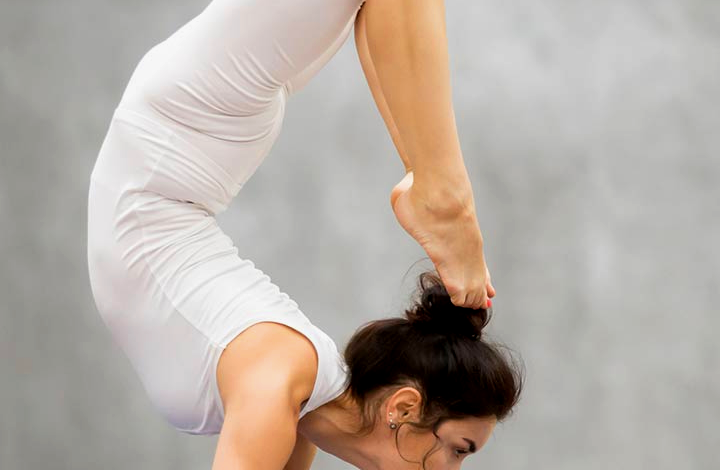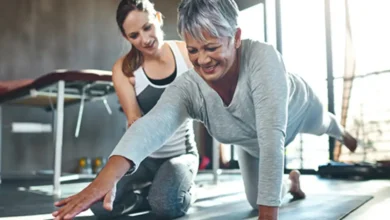The 10 Best Beginner-Friendly Yoga Poses

The practice of yoga is a straightforward method that can help you enhance your health. A consistent practice has been shown to help enhance your mood, develop and tone your muscles, increase your flexibility, improve your cardiovascular fitness, increase your energy levels, and a number of other benefits.
Best Beginner-Friendly Yoga Poses
The good news is that you do not need to be an expert yogi in order to reap the benefits of yoga postures. These beginner positions are sure to get your feet wet when you are just beginning your adventure into the world of yoga.
Remember to take long, slow, and deep breaths while you are holding each friendly yoga poses for ten seconds. This is a general principle that should be followed. Yoga brings the body, the mind, and the breath together. In order to extract the maximum advantages from this time-honored method of treatment, it is absolutely necessary for you to maintain awareness of your breathing.
Read More : Best Exercise for Heart at Home: Keep Your Cardiovascular Health in Check
Here are 10 friendly yoga poses for beginners that you should know.
Downward Facing Dog
Due to the fact that this posture stimulates your hamstrings and thoracic spine in particular, it is a fantastic alternative for anyone who experiences tightness in these areas.
- Position your palms so that they are underneath your shoulders, and maintain an all-fours position on the mat with your knees bent at a 90-degree angle.
- Applying pressure to your hands, curling your toes under, and rising your hips high into the sky are the steps that you should do to begin the posture.
- Feel a significant stretch in your upper back and down the back of your legs as you press your heels toward the ground. Perform this exercise.
- To get the most out of the stretch, pedal your feet one at a time in a gentle manner.
Mountain Pose
It is common practice to adopt this yoga stance as a transitional pose at the beginning of other moves. It is helpful for bringing your mind and body back to the present moment and anchoring you while you are performing a series of positions. You should return to this one if you find that you have lost concentration on your breath and require a brief pause in order to reset.
- Bring your feet together so that they are touching while you are standing on the top of your yoga mat.
- Make a conscious effort to separate your fingers and move your arms in a gentle manner about five inches away from your waist.
- Maintain a tall posture, put your feet firmly on the ground underneath you, take a deep breath in with your nose, and then exhale through your mouth for a considerable amount of time.
Warrior I
When it comes to increasing strength and stability, Warrior I is a good pose to practice.
- You should start with your feet touching, and then slowly twist your left foot to a 45-degree angle.
- In order to do a lunge, step the right foot forward while maintaining a 45-degree angle at the front knee.
Raise both arms above your head in a gentle manner while maintaining an active and engaged finger position. - As you breathe into the friendly yoga poses, make sure that your entire back is either somewhat neutral or slightly extended.
- During this position, make sure that both hips are squared forward, and concentrate on taking long, calm breaths in and out.
Warrior II
This variation of the Warrior posture is great for improving core strength, leg strength, and knee stability. It is also great for strengthening the legs.
- Make sure that all of the steps for Warrior I are finished.
- Proceed to rotate your body such that your shoulders are aligned in a parallel position to your front leg.
- The arms must be extended straight, as opposed to being raised overhead, as was the case in Warrior I.
- Your head should be facing forward, and your gaze should be determined.
- As you feel the muscles in your front leg working, take several deep, long breaths.
Triangle Pose
Despite the fact that this stance is more difficult, it is not impossible to achieve. Consider elevating the ground by placing a block on the ground and resting your hand on that instead of keeping your hand on the floor if you do not have the flexibility to keep your hand on the floor. You will find that this friendly yoga poses is the most challenging for your hip flexibility and balance.
- Ensure that your front foot is positioned forward and your back foot is perpendicular to the ground by adopting a wide stance with your feet.
- Make sure you are maintaining your equilibrium by bringing your left hand to your front foot.
- While you are doing this, make sure to gaze in the direction of your hand and rotate your torso so that your right arm is now pointing upward!
- Hold the pose for a few moments while taking numerous deep breaths and making sure to keep your balance.
Cat-Cow
The vertebrae in your back are challenged to move in a fluid but controlled manner when you try this pose, which is great for improving back mobility. During the process of initiating each part of the action, you should see each of your vertebrae bending one at a time.
- Put yourself in an all-fours position on the mat, which means that your spine should be neutral and your eyes should be facing the mat that is beneath you.
- While you are doing this, take a deep breath in and stretch out your back and neck while staring up at the mountains.
- A C-curve should be formed by bending your spine and neck as you exhale, and you should glance back toward the mat that is beneath you.
Child’s Pose
You should feel free to spend a few breaths in this position if you feel like you need a break from the other poses that you are doing during your friendly yoga poses practice. Child’s pose is a good stretch for your upper and lower back. It is generally performed in between more demanding stretches as a relaxation position.
- Assume an all-fours position on your yoga mat with your toes pointed outward starting position.
- You should press your palms into the floor and then sit your butt back on your heels. At the same time, you should gently bring your head to the mat in front of you.
- You should place your forehead on the mat while your arms are stretched forward, and then take long, calm, deep breaths into your upper back.
Tree Pose
This pose is great for developing your balance and coordination, since it pushes your stability and challenges you to be more stable. In the event that you lose your balance, you need not be concerned; simply pick your foot up off the ground and try again!
- In order to be ready for the position, begin by bringing both of your feet together and standing tall.
- As you raise your arms toward the heavens, bring your palms together and touch them over your head.
- Concurrently, raise your knee to a 90-degree angle, then externally rotate your hip, and last, position the bottom of your foot on the inner part of the leg that is opposite yours.
- Ensure that you keep your posture upright, breathe deeply, and remain balanced!
High Plank
There is no better way to test your core and upper body strength than by striking this pose perfect. If you discover that maintaining the position for a number of breaths is too difficult for you, start with just a couple of deep breaths and gradually work your way up to maintaining the pose for a number of breaths.
- Once you are in an all-fours position, begin to extend one leg at a time until you are in a plank position with your back completely flat.
- You should make sure that your hands are positioned underneath your shoulders and that your palms are firmly pressed into the mat that is beneath you.
- During the process of breathing into the pose, be sure that your head is in a neutral position and that your arms are straight and powerful.
Read More : 15 Tips for Coping with Hearing Loss
Cobra
Your thoracic spine extension, also known as upper back mobility, will face a significant challenge as you perform this pose. You should take care not to overextend yourself when you are in this pose so that you do not hurt your back.
- With your head resting on the mat and your feet pointed, begin the exercise by lying on your stomach.
- You should position your palms so that they are adjacent to your ribs and bend your elbows at a sharp angle.
- By placing your palms into the ground, gently extend your neck and back toward the sky. This will help you feel more grounded.
- When you stretch your upper back, make sure to only do so to the extent that you are comfortable with.
Conclusion
Yogic practice is open to anyone. When it comes to stretching, you don’t need any fancy equipment, and you certainly don’t need to be an expert in order to give yoga a shot without any hesitation.
If you are just starting out as a yogi, you can gradually increase your level of self-assurance and begin to experiment with different friendly yoga poses because there are an infinite number of variants.







